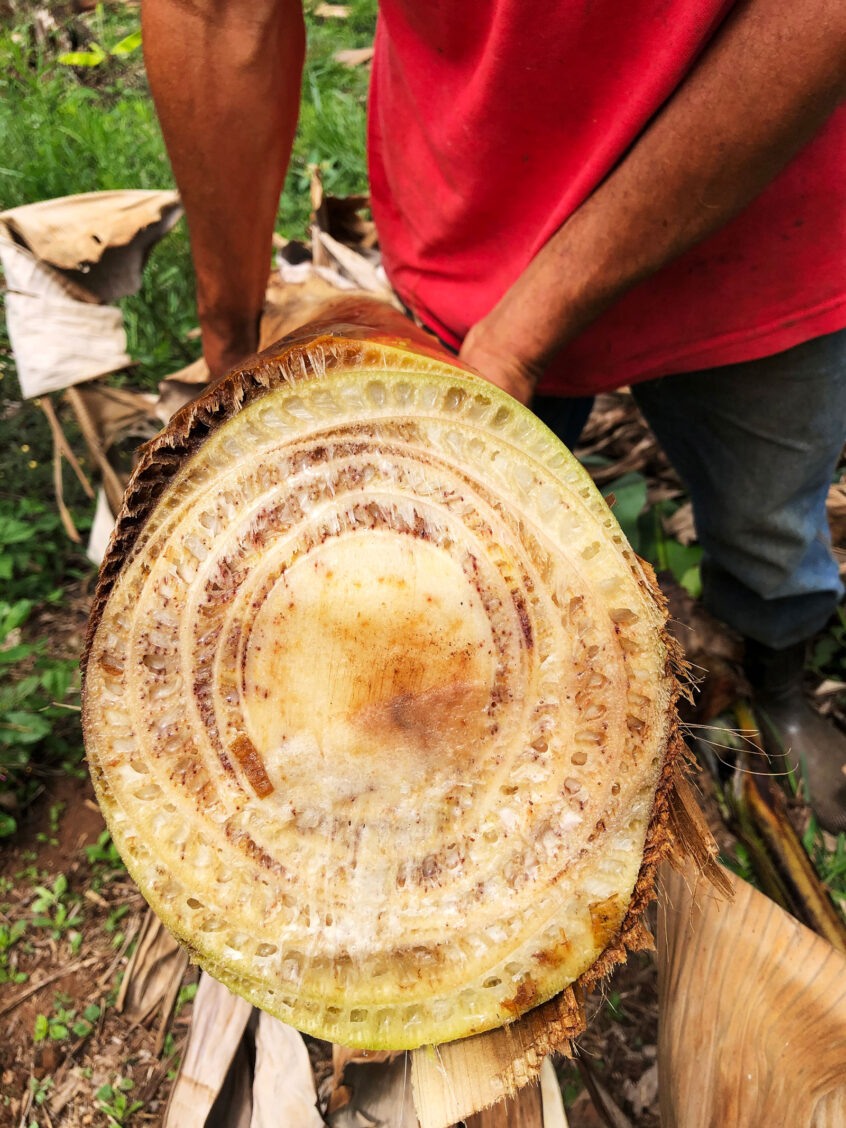Global cooperation fights a potentially devastating banana pandemic
A potentially devastating banana disease (Fusarium TR4) is now spreading across the tropics, threatening the livelihoods of smallholders and large commercial farmers alike, especially growers of Cavendish, the main variety of dessert banana. There have been efforts to understand and control this devastating disease, but a real solution will require international cooperation across many disciplines. In 2020, RTB supported a virtual symposium and a masterclass to share information on how TR4 spreads, how to diagnose it and insights into future control methods.

A virulent strain of a soil-dwelling fungus known as Fusarium Tropical Race 4 (TR4) is threatening the world supply of bananas, and the livelihood of millions of farmers. TR4 kills the banana plant by attacking its vascular system. Disease management is complex, as the fungus persists for decades in infected fields and there are no fully effective strategies for managing TR4.
The pathogen spreads easily through spores, in contaminated soil and planting material. The spores even cling to farmers’ shoes and farming equipment. First identified in Taiwan in 1967, TR4 spread to other Asian countries by the early 2000s. Since 2014, the disease has expanded quickly across the greater Mekong Delta, especially in Laos and Vietnam. TR4 also emerged in 2013 in Mozambique, and was more recently identified on Mayotte, an island in the Indian Ocean. In August 2019, TR4 was reported in organic banana plants in La Guajira, Colombia, while in April 2021, TR4 was spotted in northern Peru, also on an organic banana farm. So far, the Colombians have managed to contain TR4 in the department of La Guajira, although the pathogen has spread from two farms to ten. The Cavendish variety, which dominates the market for dessert bananas, is widely grown as a monocrop, facilitating the spread of the disease. However, TR4 is also starting to gradually spread into smaller-scale, more diversified banana farming systems in various Asian countries.
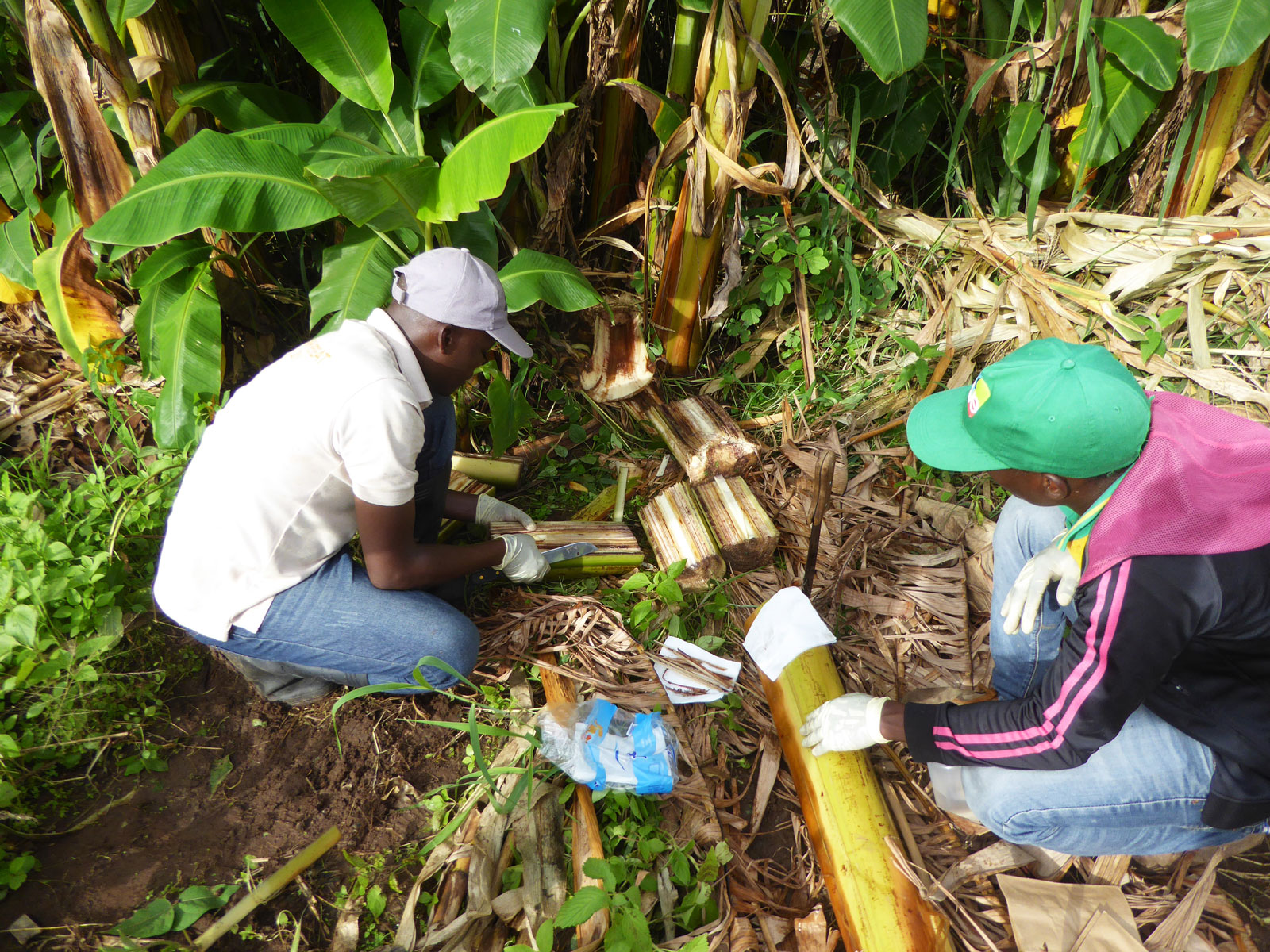
The Alliance of Bioversity and CIAT and the International Institute of Tropical Agriculture (IITA), with the support of RTB, held a two-day virtual mini-symposium which presented a state-of-the-art overview of research on this disease. In addition, a virtual Masterclass for anyone interested in the pathogen, diagnostic tools, control strategies and the impact was organized by The Alliance and IITA in the framework of ProMusa and RTB.
During the Masterclass, banana researchers from across the globe presented current knowledge on Fusarium spread, epidemiology and control. At the virtual symposium, novel research insights were communicated. For example, how to detect viable Fusarium inoculum from environmental samples, or insights in the survival and treatment of Fusarium in water. In addition, weevils and nematodes were reported to contribute to disease spread and infection intensity. The symposium also presented new tools to detect and map TR4.
The symposium discussed biocontrol approaches, including use of the beneficial fungus Trichoderma to control TR4. The substrate left over after harvesting cultivated mushrooms could be applied to the soil to stop the spread of the disease. Groundcover root flavonoids and phenolic acids may also help stop the fungus in the soil. Researchers in China have identified beneficial bacteria closely related to the well-known Bt. Two of these Bacillus bacteria are now being screened to find the best strains for biological control of TR4. Colombian scientists are testing ammonia-based soil disinfectants to eliminate the pathogen from locations where infected mats had been removed.
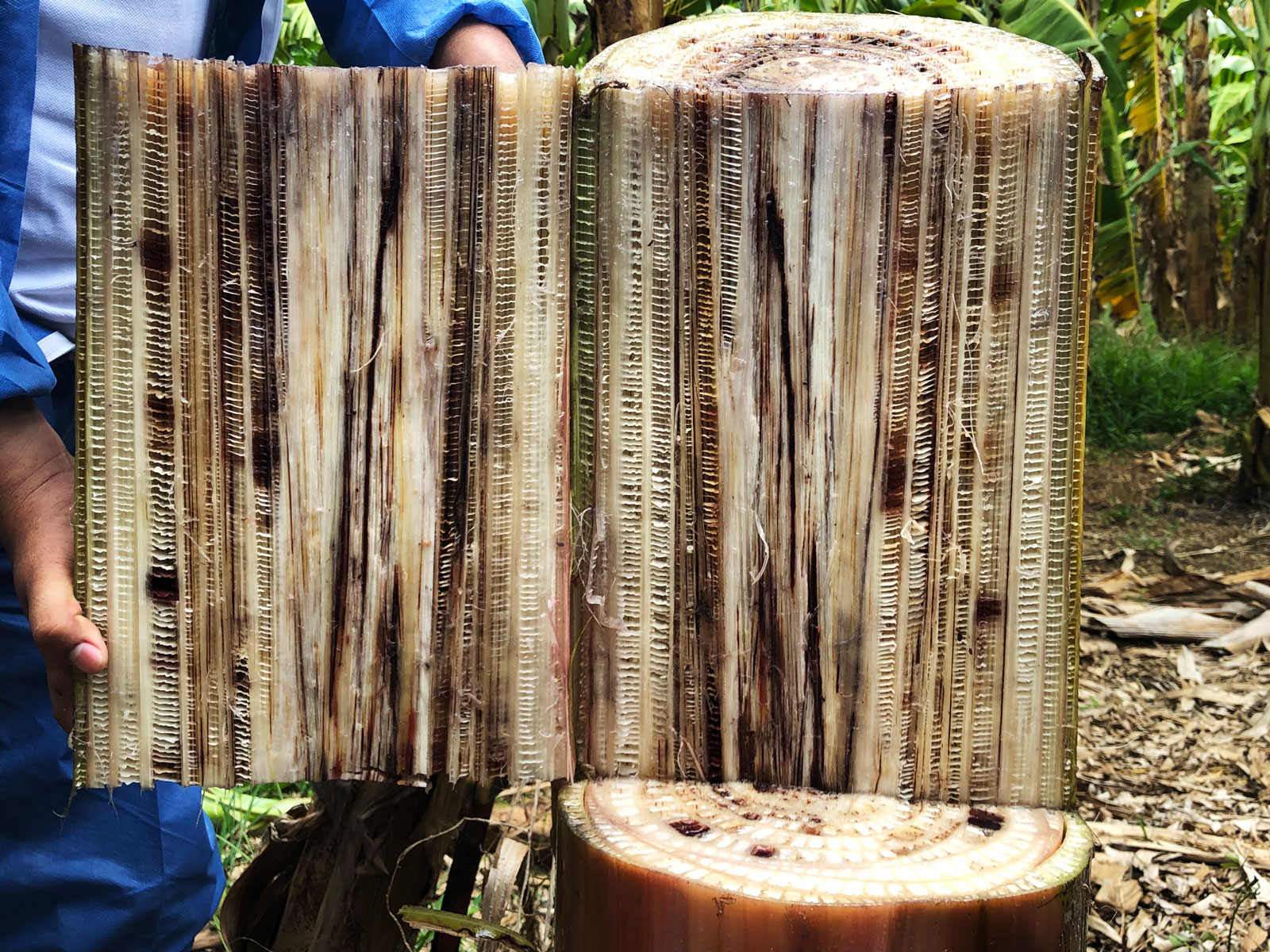
The key option to mitigate the impact of Fusarium is through the use of resistant or highly tolerant germplasm. Some promising genetic material is currently available and is being used, and many other banana types are being screened for resistance. Therefore, conventional breeding, in addition to GM and CRISPR, will most likely widen the pool of resistant germplasm in the years to come.
“The rapid spread of TR4 threatens food security across the tropics on three continents. The banana also creates lots of jobs, including many for women and youth, from farming to packing houses to retail sales. It’s heartening that the world’s experts have been able to start working together to develop the technologies that will solve this crisis,” says James Legg, leader of FP3, which helped to sponsor the symposium.
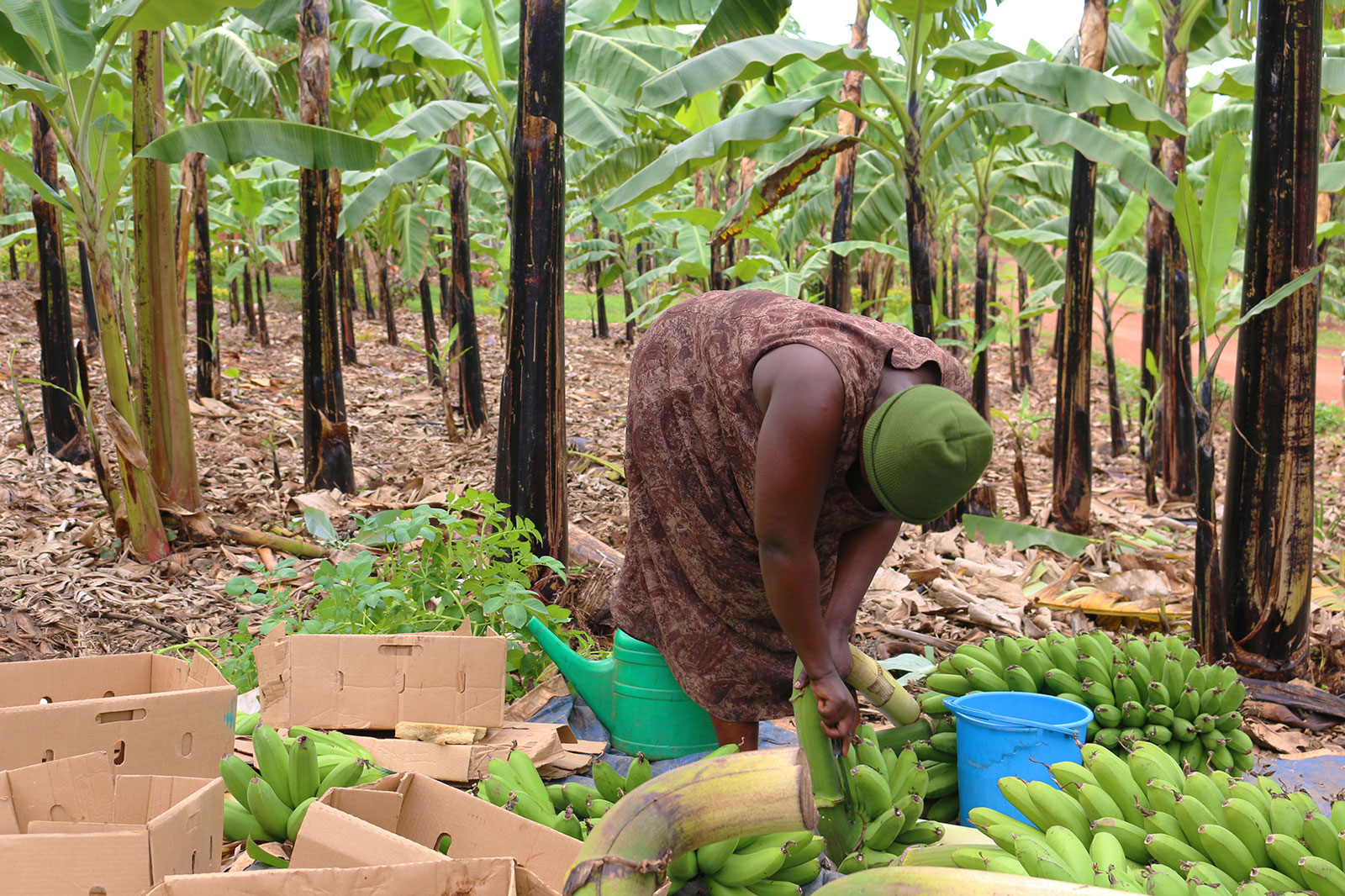
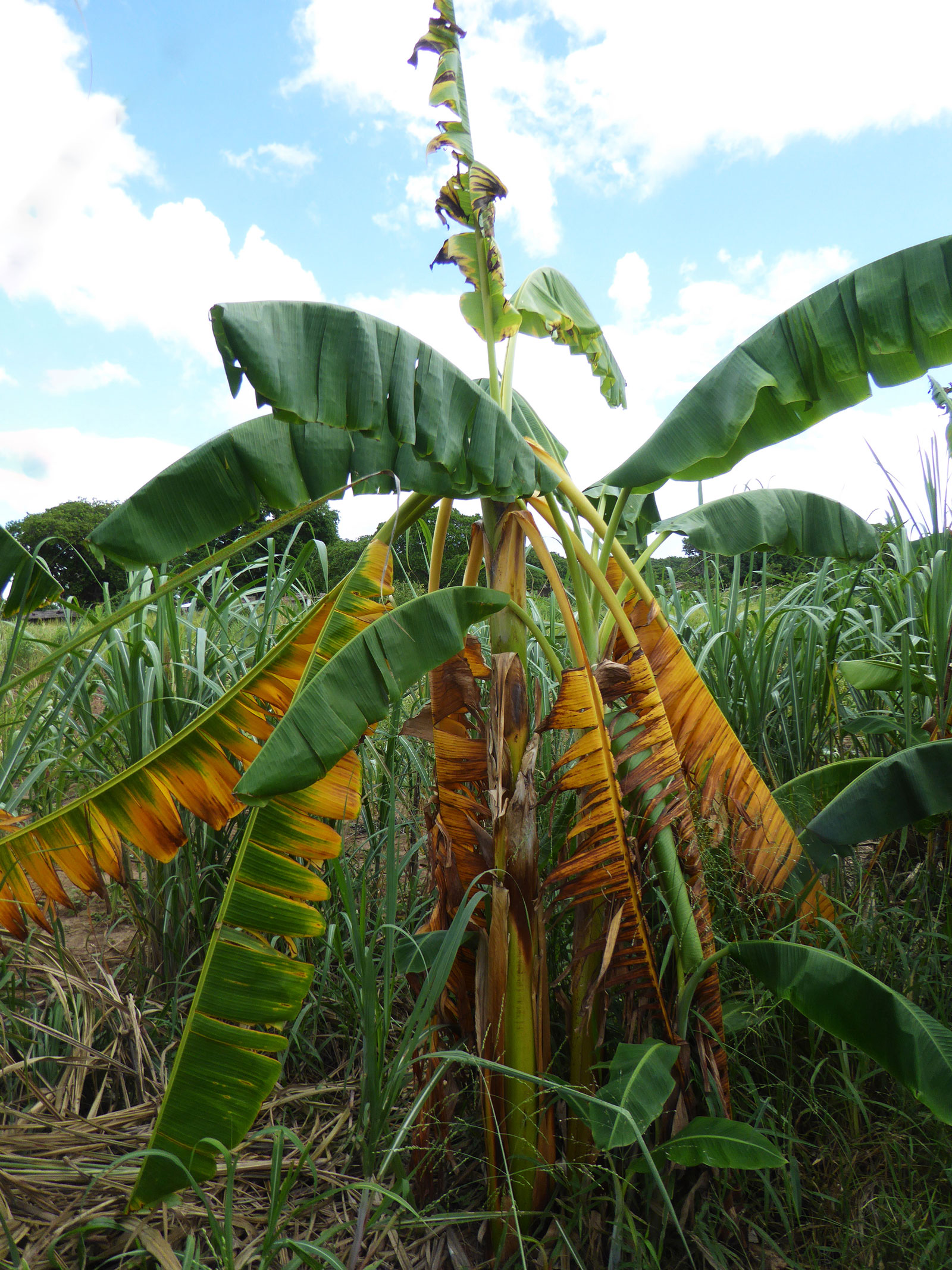
SHARE THIS

